Peter Ireland – 21 June, 2014
Clarke's smoking chimneys are undeniably in the tradition of the Sublime, but in the 21st century admiration of this kind of grand beauty must come tinged with some degree of guilt, given the growing impact of climate change.
This exhibition features three new images by Conor Clarke, currently based in Berlin, and described on her website as “specialising in portraiture and observational photography”, plus four new images (including a diptych) by Auckland-based Sam Hartnett, well-known for his work, which covers a spectrum having “commercial” at one end and “personal” at the other. Such labels don’t make much sense, though, when looking at what Hartnett does - and at what most other photographers of his generation do. They used to make sense when there was a difference between the bread-and-butter of making a living and the caviar of having a life, but in the past couple of decades when photography ceased having a subservient role in the commercial world and, in a way, moved into a management position, the spectrum has segued into a single colour. Over that time there’s been a steady coming-together of the interests and aims of the formerly discrete commercial and art worlds, so that it’s hard to know which way the traffic is going with much of contemporary practice.
Photography’s good at picking up the oddness in and of the world; a spectrum of impressions ranging from the merely quirky to the intellectually and spiritually disruptive that run counter to the narratives of belief we construct for ourselves to make sense of experience. Such narratives rely on patterns rather than any sorted evidence. Whether it’s God, science or Friedman economics, they’re all air-bags against the chaos of the void. As the pace of life increases, this oddness is more likely to get overlooked, and it’s photography’s often miraculous gift here to restore sight to the blind. It’s often assumed the moving image is “better” at representing experience. But then, contemplation’s part of experience too, so the stilled image retains a useful place in the process of reflecting on what has happened, not merely serving the recognition of what appears to be going on right now.
Hartnett’s of a generation for whom Modernism is an historical artefact, not a guiding principle. The Modernist project’s embrace of “authenticity” and rejection of “fake” is now a group hug, contemporary artists just as likely to mine the latter as the former for their subject matter. Indeed, such an enterprise tends to undermine any reliable notion of the authentic, so that what was anathema to Modernism is now perhaps a central part of the challenging richness of current art-making.
When Sam Hartnett began emerging as a photographer about a decade ago his roving eye revealed a slyly obsessive interest in the fake. More a suggestion, a nudge, a hint than an outright declamation. As with much photographic imagery from the late ‘90s on, the subject matter seemed banal, but the more you looked the more a sense of unease settled on the looking, turning banality into mystery. It was also the era of crass photo-shopping, the new toy, and there hovered above much photography the suspicion of manipulation - of both the image and the viewer - so it was a messy scenario not prone to easy clarification.
Over the past few decades there has been much, grimly fashionable, debate about the nature of photography’s truth, and almost invariably the discussion has centred on the medium’s assumed realism, as if its clumsy attempts to replicate “reality” were its principal - if not only - virtue. What investigations such as Hartnett’s show up, however, is not so much delineating any sharp distinctions between the real and the fake, between truth and sham, but what’s apparently real and apparently fake, which shifts the whole debate much more usefully from the ideological to the phenomenological. The apparent is photography’s province.
And it’s where Sam Hartnett hails from. There’s a 2008 image entitled Untitled, building, Berlin which depicts, well, a building that, on first glance, looks constructed of brick. The second glance turns into a growing WTF realisation. Then, as assumptions unravel, belief in realism starts to sag like a hammock under stress, and this apparently simple scene leaves us helpless amid the ruins of our perception. There’s no brick, and, is there even a building? OMG, is this even a photograph?
Hartnett’s five images in this winter/winter show, while visually disparate, seem to have a common theme. It might be a bit corny to assign this to the “nature/culture debate”, but it could be a useful starting point for anyone unfamiliar with this photographer’s through-the-looking-glass approach. What he’s doing of course is to highlight the absurdity of such binary constructions, and as with that right brain/left brain nonsense, his apparently simple images pull the intellectually threadbare rug out from under them. The tree in the corner, the wooden diptych, the concrete Moeraki boulders, the van parked like a police reconstruction are all of a piece. His work is a steel on which to sharpen our gaze.
In Byzantine art the directing presence of God was often depicted as single hand, in an act of blessing - but pointing downwards - entering the frame upper centre, like a rod in a nuclear reactor, and, to some extent, performing the same function. Like, God’s here, He’ll keep things from getting out of control. In Conor Clarke’s three rather visually splendid images this scenario has gone turkey up. It’s no longer the hand of God controlling the world but the hand of man. And the intervention through the frame is not from a heavenly top but from an earthly bottom, the top of an industrial chimney stack funnelling not transcendence but the by-product wastes of large-scale processing, exchanging grace for gas. The God airbag may have been swapped for a scientific one, but a beleaguered planet is indifferent to the distinction.
The art airbag is cornered in much the same way too. Clarke’s smoking chimneys are undeniably in the tradition of the Sublime, but in the 21st century admiration of this kind of grand beauty must come tinged with some degree of guilt, given the growing impact of climate change. Such conflict was an element in the recent Auckland exhibition by Jono Rotman of his large portraits of members of the Mongrel Mob. While notable examples of what photography can bring to the tradition of portraiture, these images had greater potency in the social/moral discussion around the public showing of such imagery, and was, like most moral situations, basically unresolvable; there is no black and white, just a series of infinite greys stretching beyond the horizon. (Although, in a radio interview one of the gallery directors observed that as a result of the controversy many more people than usual visited the show; not much doubt as to what was black and what was white there.)
Clarke’s work to date, while distinguished, has not shown much overt concern for the condition of mother earth. The state of mother earth in all its peculiarities, perhaps, but nothing that would necessarily endear her to the Green Party. She has a sharp eye and an almost faultless instinct for formal values, even when, as evidenced by her website, her photography has a highly diaristic quality tracing the social inter-actions of her family and friends. That “even when” is indicative of a particular quality photography brings to image-making and one of the reasons so many people still find it difficult to accept within the pantheon of art. It’s just “too ordinary” when art is expected to be “so special”. Sure, much of Clarke’s imagery on the net makes no claims to being art, but nonetheless it informs the viewer as to her concerns and engagements. Taken as a whole as a portrayal of human relationships it’s the upside of, say, Richard Billingham’s darker record of his family in the 1990s, Clarke’s account characterised instead by an openly-expressed friendship, conviviality, love and optimism.
In the Frank Hofmann archive there’s a small, rectangular biscuit tin containing 437 very small negatives the photographer brought to New Zealand when he fled Europe at the beginning of the Second World War. They are informal snapshots taken from the mid-to-later 1930s when he was in his late teens and early twenties, very like Clarke’s in that they record his young, mainly Jewish compatriates enjoying one another’s company, often in the leafy glades of the Czech countryside. Similarly, there’s an openly-expressed friendship, conviviality and love. The optimism, of course, was very, very misplaced. Just over a decade later most of the picnickers from Prague were dead, victims either of the European conflict or gassing in the concentration camps. Clarke’s belching chimneys may not immediately threaten her friends and loved ones, but their children and grandchildren may have cause for grave concern.
Peter Ireland
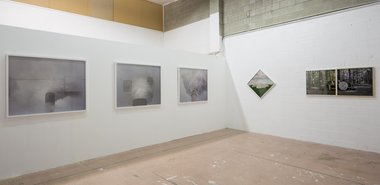
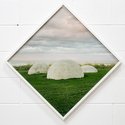
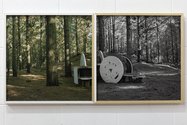
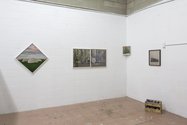
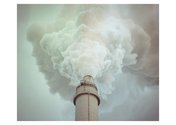
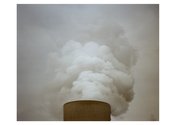
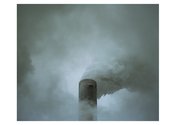

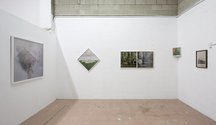
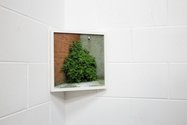

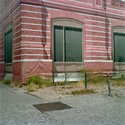
 Two Rooms presents a program of residencies and projects
Two Rooms presents a program of residencies and projects Advertising in this column
Advertising in this column



This Discussion has 0 comments.
Comment
Participate
Register to Participate.
Sign in
Sign in to an existing account.